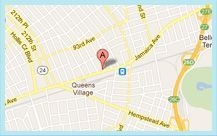Alternative Therapies
A comprehensive treatment plan for glaucoma may include a range of complementary and alternative therapies.
Nutrition
Nutritional tips include the following:
- Eat foods rich in bioflavonoids and carotenes, such as dark berries, dark leafy greens, and yellow and orange vegetables.
- Eliminate food allergens.
- Reduce foods that may dramatically alter levels of sugar in your blood, such as sweets, fruits, and refined foods.
Potentially beneficial nutrient supplements include the following.
- Vitamin C (500 to 1,000 mg three times per day)
- Vitamin E (400 to 800 IU per day) and vitamin A (10,000 IU per day) or beta carotene (25,000 IU per day), thiamine (10 mg per day)
- Coenzyme Q10 (100 mg one to two times per day), which may minimize side effects of certain drug therapies
- Zinc (30 mg per day) and selenium (200 mcg per day)
- Omega-3 fatty acids (300 to 500 mg daily)
- Melatonin (2 to 5 mg before bed)
Herbs
The use of herbal remedies may offer relief from symptoms. Herbs are generally available as dried extracts (pills, capsules, or tablets), teas, or tinctures (alcohol extraction, unless otherwise noted). Dose for teas is 1 heaping tsp. per cup of water steeped for 10 minutes (roots need 20 minutes).
- Bilberry (Vaccinium myrtillus) 100 to 200 mg two times per day
- Rutin 20 mg three times per day, for associated allergies
- Hawthorn berries (Crataegus monogyna) 200 mg two times per day, especially for high blood pressure
- Ginkgo (Ginkgo biloba) 120 mg two times per day to improve circulation
- Combine equal parts of ginkgo, hawthorn, bilberry, and elderberry (Sambucus nigra) in a tea (three cups per day) or tincture (60 drops two times per day) to strengthen vascular tissues and improve circulation.

Contact Us





